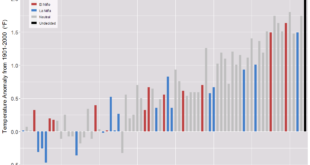 There is a lot of information in the Climate Science Special Report, but you can read the Executive Summary, or this shorter summary from the Wunderground post Blockbuster Assessment: Humans Likely Responsible For Virtually All Global Warming Since 1950s. Posted here is a graph about global mean sea level (GMSL) rise from the executive summary. Yes, 8ft of sea level rise is a possibility by 2100.
There is a lot of information in the Climate Science Special Report, but you can read the Executive Summary, or this shorter summary from the Wunderground post Blockbuster Assessment: Humans Likely Responsible For Virtually All Global Warming Since 1950s. Posted here is a graph about global mean sea level (GMSL) rise from the executive summary. Yes, 8ft of sea level rise is a possibility by 2100.
Emerging science regarding Antarctic ice sheet stability suggests that, for higher scenarios, a GMSL rise exceeding 8 feet (2.4 m) by 2100 is physically possible, although the probability of such an extreme outcome cannot currently be assessed. Regardless of emission pathway, it is extremely likely that GMSL rise will continue beyond 2100 (high confidence). (Ch. 12)
Relative sea level rise in this century will vary along U.S. coastlines due, in part, to changes in Earth’s gravitational field and rotation from melting of land ice, changes in ocean circulation, and vertical land motion (very high confidence). For almost all future GMSL rise scenarios, relative sea level rise is likely to be greater than the global average in the U.S. Northeast and the western Gulf of Mexico. In intermediate and low GMSL rise scenarios, relative sea level rise is likely to be less than the global average in much of the Pacific Northwest and Alaska. For high GMSL rise scenarios, relative sea level rise is likely to be higher than the global average along all U.S. coastlines outside Alaska. Almost all U.S. coastlines experience more than global mean sea level rise in response to Antarctic ice loss, and thus would be particularly affected under extreme GMSL rise scenarios involving substantial Antarctic mass loss (high confidence). (Ch. 12)
Plenty of graphs in the executive summary and the Wundergraound post of any QL course and much of the data is available.
